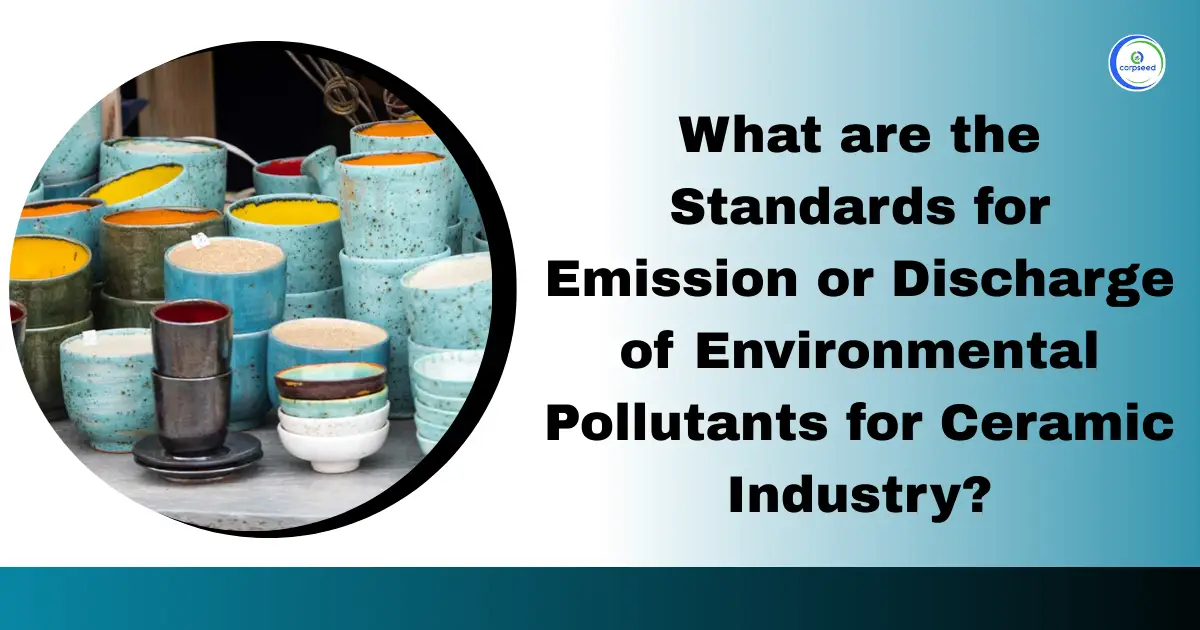Air pollution has become an urgent concern in several regions of India, especially in industrial cities and heavily populated areas. Increasing levels of nitrogen dioxide (NO2) and particulate matter (PM) in ambient air have called for urgent government intervention. Seeing the seriousness and urgency of these issues, the Ministry of Environment, Forest and Climate Change (MOEFCC) has announced new emission standards for several industrial sectors, including the glass industry, to curb air pollution and protect public health.
Table of Contents
This new rule is part of the Environment (Protection) Amendment Rules, 2018 and explicitly establish emission limits for sulfur dioxide (SO₂) and nitrogen oxides (NOₓ) two major pollutants formed by combustion-based industries.
Understanding SO₂ and NOₓ: Why They Matter
Before discovering the particulars of the glass industry and its emission standards, it's important to understand what SO₂ (sulfur dioxide) and NOₓ (nitrogen oxides) are, and why their existence in the atmosphere is concerning. These pollutants are the by-products of industrial combustion processes and can have a major impact on health and the environment.
--------------Blog Contact Form-------------
Sulfur dioxide (SO2) is produced mainly by the burning of sulfur-containing fuels like coal and oil. Once released into the atmosphere, SO2 can react with other compounds to produce fine sulfate particles, contributing to PM2.5 pollution. These particles can travel deep into the lungs, causing serious health risks, especially in vulnerable groups such as children, the elderly, and individuals with pre-existing respiratory conditions.
Nitrous oxide (NOₓ), a group of gases that contain nitric oxide (NO) and nitrogen dioxide (NO2), is produced during high temperature combustion processes. NOₓ emissions play an important role in the formation of ground-level ozone, which is a main component of. These pollutants are not only harmful to the environment, but they can also increase respiratory diseases such as asthma and bronchitis.
Both SO₂ and NOₓ are main contributors to air pollution, and their depletion is important in improving air quality and public health consequences.
Emission Standards for the Glass Industry: New Regulations
Under the amended Environment Protection Rules, 1986, the glass industry now has to adhere to specific emission limits for SO₂ and NOₓ, depending on the type of fuel used in the furnace. These standards are listed after Serial Number 106 of Schedule I in the amendment:
| Sl. No. | Type of Industrial Sector | Standards | |
| SO2 (mg/Nm3 ) | NOx (mg/Nm3 ) | ||
| 107 | Ceramic | 400 | 600 |
| 108 | Foundry Industries (Furnaces based on Fuel) | 300 | 400 |
| 109 | Glass | 500 for natural gas firing 1500 for other fuels | 1000 |
| 110 | Lime Kiln | 400 | 500 |
| 111 | Reheating furnace | 300 | 1000 |
Note:
- It is required to meet stack height criteria publication vide notification number G.S.R 475 (E), dated the 5th May, 1992, published in Gazette No. 202 dated 5th May 1992.
- It is required to meet stack height criteria publication vide notification number G.S.R. 742 (E), dated the 30th August, 1990, published in Gazette No. 365 dated 30th August, 1990.
- It is required to meet stack height criteria publication vide notification number G.S.R 93 (E), dated 21st February, 1991, published in the Gazette No. 79 dated the 27th February, 1991.
- The lime kiln shall ensure that the minimum stack height is in accordance with the Environment Protection Act, 1986, as amended from time to time, and relevant direction of SPCBs / PCCs shall be adhered to. It shall be the concerned SPCB / PCC's responsibility to increase the stack height, if required, based on scientific studies, keeping in view the habitations around such lime kilns.
- It is required to meet stack height criteria publication as prescribed by SPCBs/PCCs.
Stack Height Criteria: A Crucial Complementary Measure
In addition to emission concentration limits, the amendment also confirms the importance of stack height compliance. As per the previous notifications, including G.S.R 93(E), dated 21st February 1991, industries require to ensure that stack emissions are released at heights that facilitate sufficient dispersion of pollutants, reducing ground-level concentration and human exposure.
The stack height requirement differs on the basis of fuel type and combustion capacity. While the 2018 amendment does not specify new stack height norms, it obligates compliance with existing rules laid out under the Environment Protection Act, 1986 and decisions taken by respective State Pollution Control Boards (SPCBs) or Pollution Control Committees (PCCs).
Implications for the Glass Industry
The new SO2 and NOₓ emission standards are undergoing significant changes to the functional landscape of the glass industry. These rules will affect everything from fuel choice to technology investment, with long-term concerns for environmental compliance and industry practices.
- Mandatory Compliance with Emission Limits: Glass manufacturing units must now strictly follow to the specified limits of 500 mg/Nm³ for SO₂ (when using natural gas) or 1500 mg/Nm³ (for other fuels), and 1000 mg/Nm³ for NOₓ, as per the Environment (Protection) Amendment Rules, 2018.
- Regulatory Oversight and Monitoring: Industries are subject to increased oversight by regulatory bodies such as the Central Pollution Control Board (CPCB) and State Pollution Control Boards (SPCBs), including regular audits and real-time emissions monitoring requirements.
- Need for Technological Adaptation: The new standards demand the use of emission control technologies like low-NOx burners, flue gas treatment systems, and Constant Emission Monitoring Systems (CEMS) to fulfill the prescribed limits.
- Impact on Production Planning: Manufacturers may require to revise furnace operation cycles and fuel-mix strategies to balance compliance with productivity and cost-efficiency, potentially modifying their production timelines and throughput.
- Alignment with Environmental Policy Goals: The Regulation aligns the glass industry with national and global sustainability goals, strengthening its role in improving air quality and public health outcomes.
Monitoring and Legal Compliance
Monitoring and legal compliance are crucial for industries to meet SO₂ and NOₓ emission standards. Glass manufacturing units must install Continuous Emission Monitoring Systems (CEMS) to track emissions in real-time and confirm they stay within permitted limits. It is also mandatory to observe the height requirements mentioned in government notices to help pollutant dispersion. The State Pollution Control Board (SPCBs) and Pollution Control Committees (PCCs) supervise enforcement and may revise the stack heights on the basis of environmental assessment. Non-compliance may lead to legal action, fine or closure of the plant under the Environment Protection Act, 1986. Regular reporting and audits help maintain compliance.
Conclusion
The introduction of SO2 and NOₓ standards for glass and industry is timely and necessary step in India's fight against industrial air pollution. By setting clear emission limits and strengthening stack height requirements, the government has sent a strong message: environmental compliance is not optional, it is important for sustainable development.
While the transition may be challenging, especially for small firms, the long-term benefits in terms of public health, regulatory certainty and access to global markets overshadow the initial cost. The glass industry stands at a crossroads where it must balance economic viability with environmental responsibility.
By adopting clean fuels, modern emission control technologies and active compliance, the sector can make a meaningful contribution to India's broader goals of improving air quality and achieving sustainable industrial development.
This portion of the site is for informational purposes only. The content is not legal advice. The statements and opinions are the expression of author, not corpseed, and have not been evaluated by corpseed for accuracy, completeness, or changes in the law.
BOOK A FREE CONSULTATION
Get help from an experienced legal adviser. Schedule your consultation at a time that works for you and it's absolutely FREE.
.webp)








